A Compact Fourth-Order Tunable Bandpass Filter Based on Varactor-Loaded Step-Impedance Resonators
Abstract
:1. Introduction
2. Theory of Tunable BPF with Constant ABW
3. Analysis of the Varactor-Loaded SIR
4. Frequency-Dependent Coupling Structure
4.1. Design of Frequency-Dependent Electric Coupling Structure
4.2. Design of Frequency-Dependent Magnetic Coupling Structure
4.3. Design of Frequency-Dependent Feeding Structure
5. High-Selectivity Tunable BPF with Constant ABW
6. Conclusions
Author Contributions
Funding
Institutional Review Board Statement
Informed Consent Statement
Data Availability Statement
Conflicts of Interest
References
- Doumanis, E.; Goussetis, G.; Vuorio, J.; Hautio, K.; Amper, O.; Kuusmik, E.; Palonnen, J. Tunable Filters for Agile 5G New Radio Base Transceiver Stations. IEEE Microw. Mag. 2021, 22, 26–37. [Google Scholar] [CrossRef]
- Guyette, C. Intrinsically Switched Varactor-Tuned Filters and Filter Banks. IEEE Trans. Microw. Theory Tech. 2012, 60, 1044–1056. [Google Scholar] [CrossRef]
- Islam, H.; Das, S.; Bose, T.; Ali, T. Diode Based Reconfigurable Microwave Filters for Cognitive Radio Applications: A Review. IEEE Access 2020, 8, 185429–185444. [Google Scholar] [CrossRef]
- Kumar, N.; Narayana, S.; Singh, Y.K. Constant Absolute Bandwidth Tunable Symmetric and Asymmetric Bandpass Responses Based on Reconfigurable Transmission Zeros and Bandwidth. IEEE Trans. Circuits Syst. II Express Briefs 2021, 69, 1014–1018. [Google Scholar] [CrossRef]
- Zhang, Y.-J.; Cai, J.; Chen, J.-X. Design of Novel Reconfigurable Filter with Simultaneously Tunable and Switchable Passband. IEEE Access 2019, 7, 59708–59715. [Google Scholar] [CrossRef]
- Deng, H.-W.; Sun, L.; Liu, F.; Xue, Y.-F.; Xu, T. Compact Tunable Balanced Bandpass Filter with Constant Bandwidth Based on Magnetically Coupled Resonators. IEEE Microw. Wirel. Compon. Lett. 2019, 29, 264–266. [Google Scholar] [CrossRef]
- Qin, W.; Cai, J.; Li, Y.-L.; Chen, J.-X. Wideband Tunable Bandpass Filter Using Optimized Varactor-Loaded SIRs. IEEE Microw. Wirel. Compon. Lett. 2017, 27, 812–814. [Google Scholar] [CrossRef]
- Abdelfattah, M.; Zhang, R.; Peroulis, D. High-Selectivity Tunable Filters with Dual-Mode SIW Resonators in an L-Shaped Coupling Scheme. IEEE Trans. Microw. Theory Tech. 2019, 67, 5016–5028. [Google Scholar] [CrossRef]
- Lu, D.; Tang, X.; Barker, N.S.; Feng, Y. Single-Band and Switchable Dual-/Single-Band Tunable BPFs with Predefined Tuning Range, Bandwidth, and Selectivity. IEEE Trans. Microw. Theory Tech. 2018, 66, 1215–1227. [Google Scholar] [CrossRef]
- Chen, X.; Wu, Y.; Yang, Y.; Wang, W. Simple Coupled-Line Tunable Bandpass Filter with Wide Tuning Range. IEEE Access 2020, 8, 82286–82293. [Google Scholar] [CrossRef]
- Gao, L.; Rebeiz, G.M. A 0.97–1.53-GHz Tunable Four-Pole Bandpass Filter with Four Transmission Zeroes. IEEE Microw. Wirel. Components Lett. 2019, 29, 195–197. [Google Scholar] [CrossRef]
- Liu, Y.; Liu, L.; Liang, C.; Majid, I. Compact Planar Tunable Filter with Constant Absolute Bandwidth and Wide-Frequency Tuning Range Using DGS Coupling Structure. IEEE Access 2021, 9, 157259–157266. [Google Scholar] [CrossRef]
- Xiang, Q.; Sun, H.; Fu, M.; Jin, Q.; Feng, Q. A 5th-Order Constant Bandwidth Tunable Bandpass Filter with Two Cascaded Trisection Structures. IEEE Trans. Circuits Syst. II Express Briefs 2022, 70, 126–130. [Google Scholar] [CrossRef]
- Huang, X.; Feng, Q.; Zhu, L.; Xiang, Q.; Jia, D. Synthesis and design of tunable bandpass filters with constant absolute bandwidth using varactor-loaded microstrip resonator. Int. J. RF Microw. Comput.-Aided Eng. 2014, 24, 681–689. [Google Scholar] [CrossRef]
- Ohira, M.; Hashimoto, S.; Ma, Z.; Wang, X. Coupling-Matrix-Based Systematic Design of Single-DC-Bias-Controlled Microstrip Higher Order Tunable Bandpass Filters with Constant Absolute Bandwidth and Transmission Zeros. IEEE Trans. Microw. Theory Tech. 2018, 67, 118–128. [Google Scholar] [CrossRef]
- Tian, D.; Feng, Q.; Xiang, Q. Design of High Order Cross-Coupled Constant Absolute Bandwidth Frequency-Agile Bandpass Filters. Appl. Comput. Electromagn. Soc. J. 2019, 34, 1373–1378. [Google Scholar]
- Zhang, J.; You, C.J.; Jiao, Z.; Zhu, J.; Xiao, Q.; Cai, J. A tunable LTCC fourth-order bandpass filter with high selectivity for L-band satellite applications. Microw. Opt. Technol. Lett. 2021, 63, 1067–1072. [Google Scholar] [CrossRef]
- Wu, H.; You, B.; Gao, K.-K.; Li, X.-G. A 4th-Order LTCC Bandpass Filter with Both Tunable Center Frequency and Bandwidth. Electronics 2022, 11, 4119. [Google Scholar] [CrossRef]
- Li, X.; Zou, C.; Xiang, Q. Fourth-order Electrical Tunable Microstrip LC Cross-coupled Bandpass Filter. In Proceedings of the 2019 Photonics & Electromagnetics Research Symposium-Spring (PIERS-Spring), Rome, Italy, 17–20 June 2019; pp. 2076–2079. [Google Scholar]
- Wang, S.; Xiang, Q.; Feng, Q. A Fourth Order Constant Absolute Bandwidth Tunable Bandpass Filter with Cross-Coupling. In Proceedings of the 2019 IEEE MTT-S International Wireless Symposium (IWS), Guangzhou, China, 19–22 May 2019; pp. 1–3. [Google Scholar] [CrossRef]
- Cameron, R.J.; Kudsia, C.M.; Mansour, R.R. Microwave Filters for Communication Systems: Fundamentals, Design, and Applications; John Wiley & Sons: Hoboken, NJ, USA, 2018. [Google Scholar]
- Lu, D.; Yu, M.; Barker, N.S.; Li, Z.; Li, W.; Tang, X. Advanced Synthesis of Wide-Tuning-Range Frequency-Adaptive Bandpass Filter with Constant Absolute Bandwidth. IEEE Trans. Microw. Theory Tech. 2019, 67, 4362–4375. [Google Scholar] [CrossRef]
- Hong, J.-S.G.; Lancaster, M.J. Microstrip Filters for RF/Microwave Applications; John Wiley & Sons: Hoboken, NJ, USA, 2004; Volume 167. [Google Scholar]
- Anand, A.; Liu, X. Reconfigurable Planar Capacitive Coupling in Substrate-Integrated Coaxial-Cavity Filters. IEEE Trans. Microw. Theory Tech. 2016, 64, 2548–2560. [Google Scholar] [CrossRef] [Green Version]
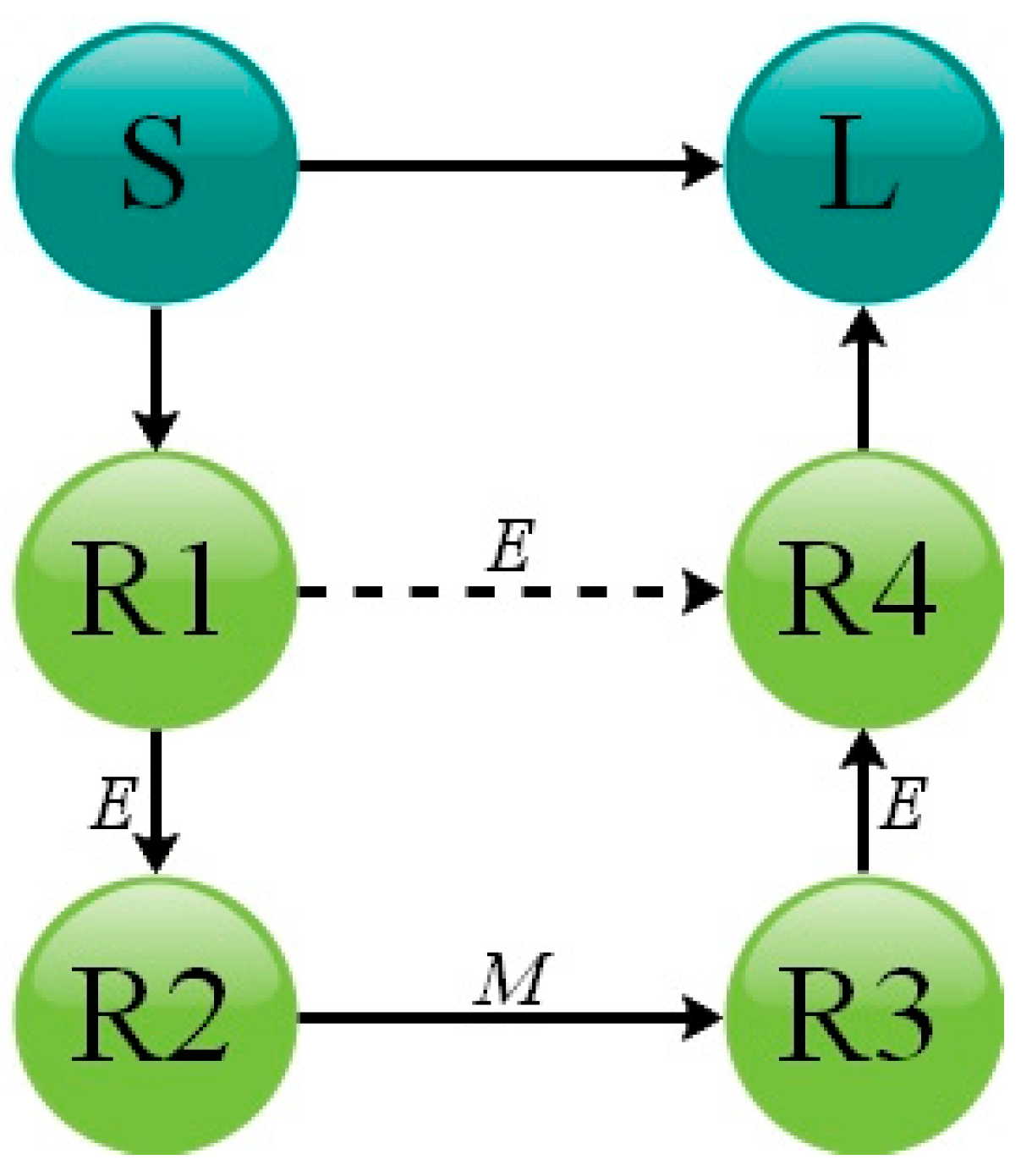
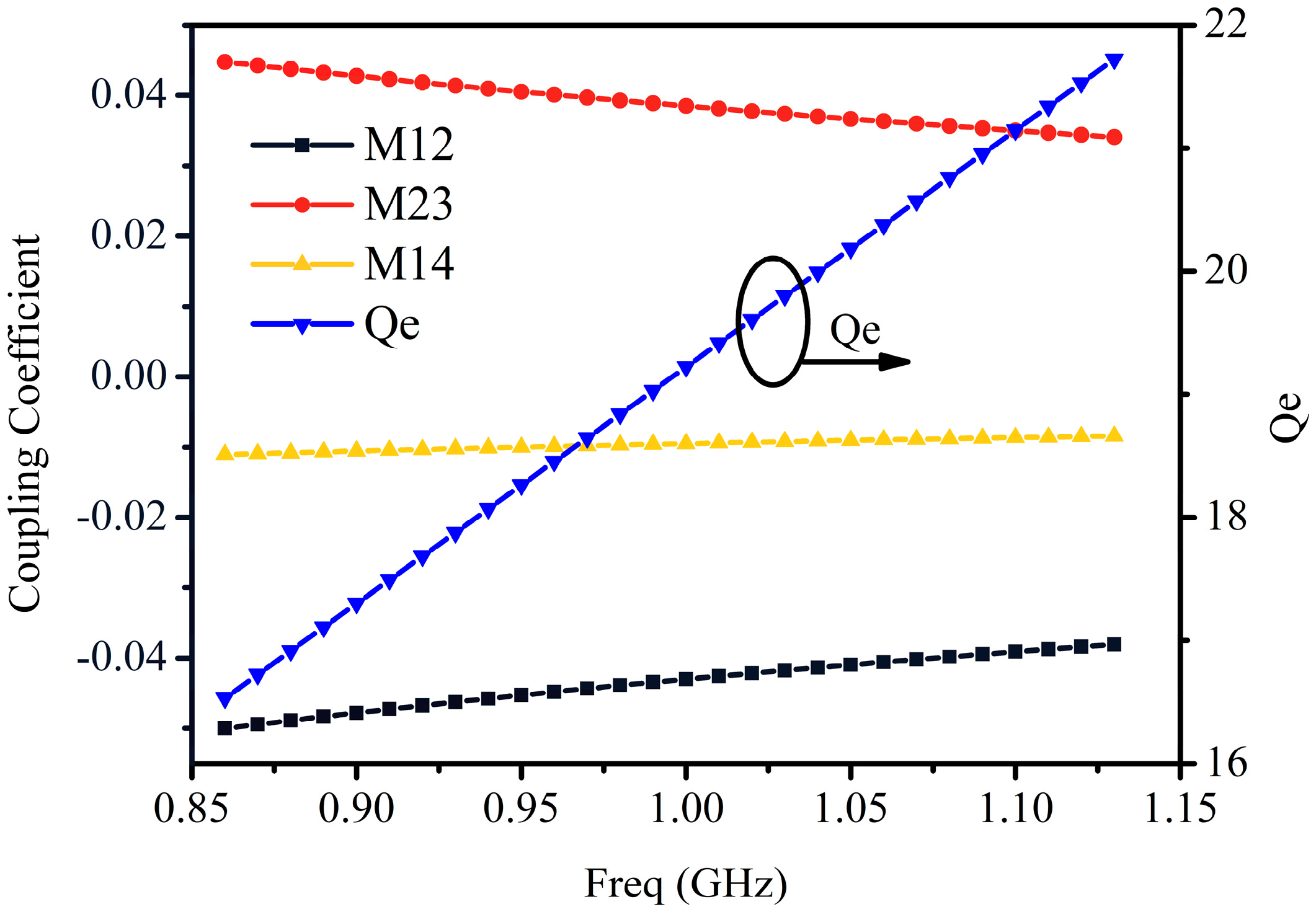



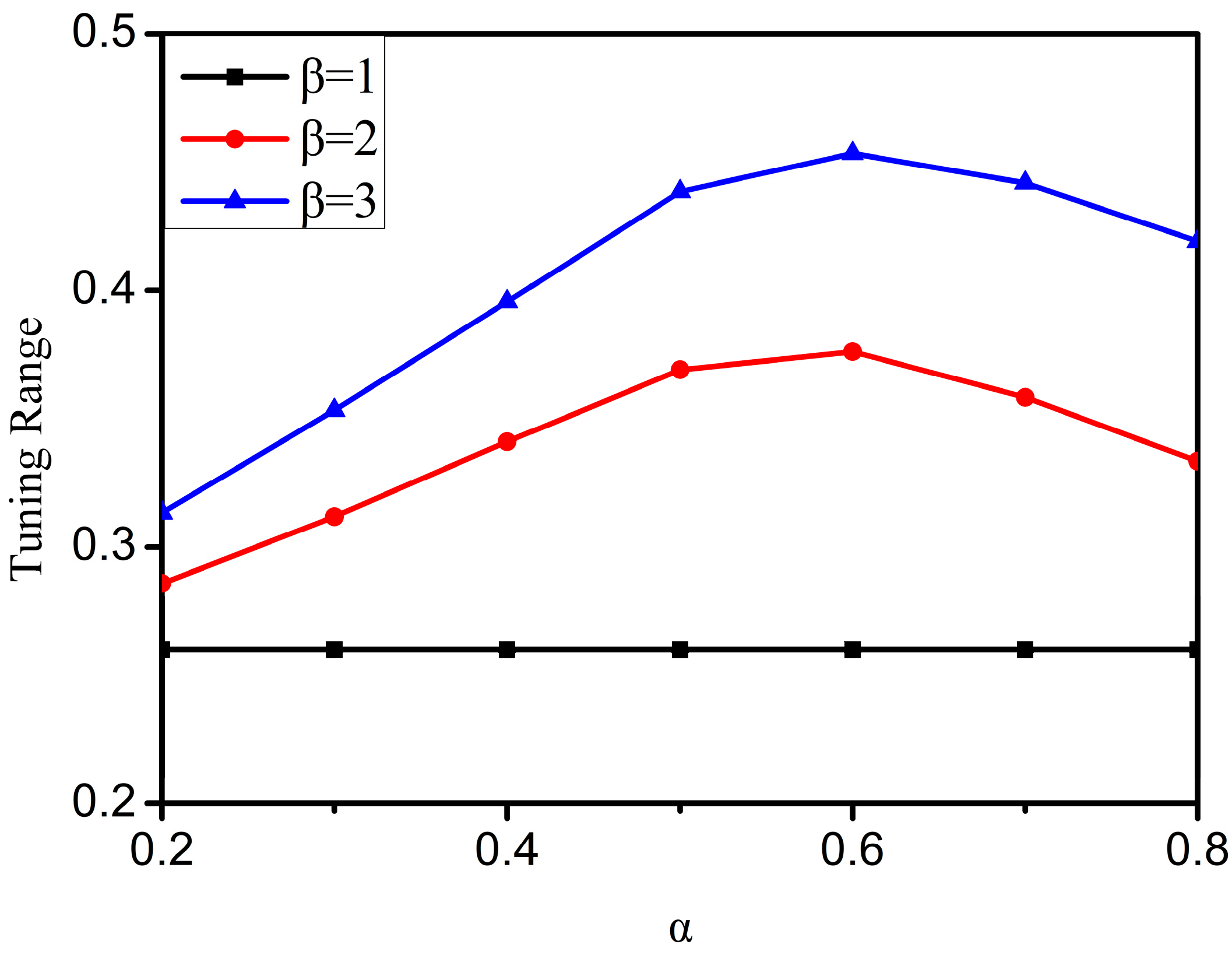


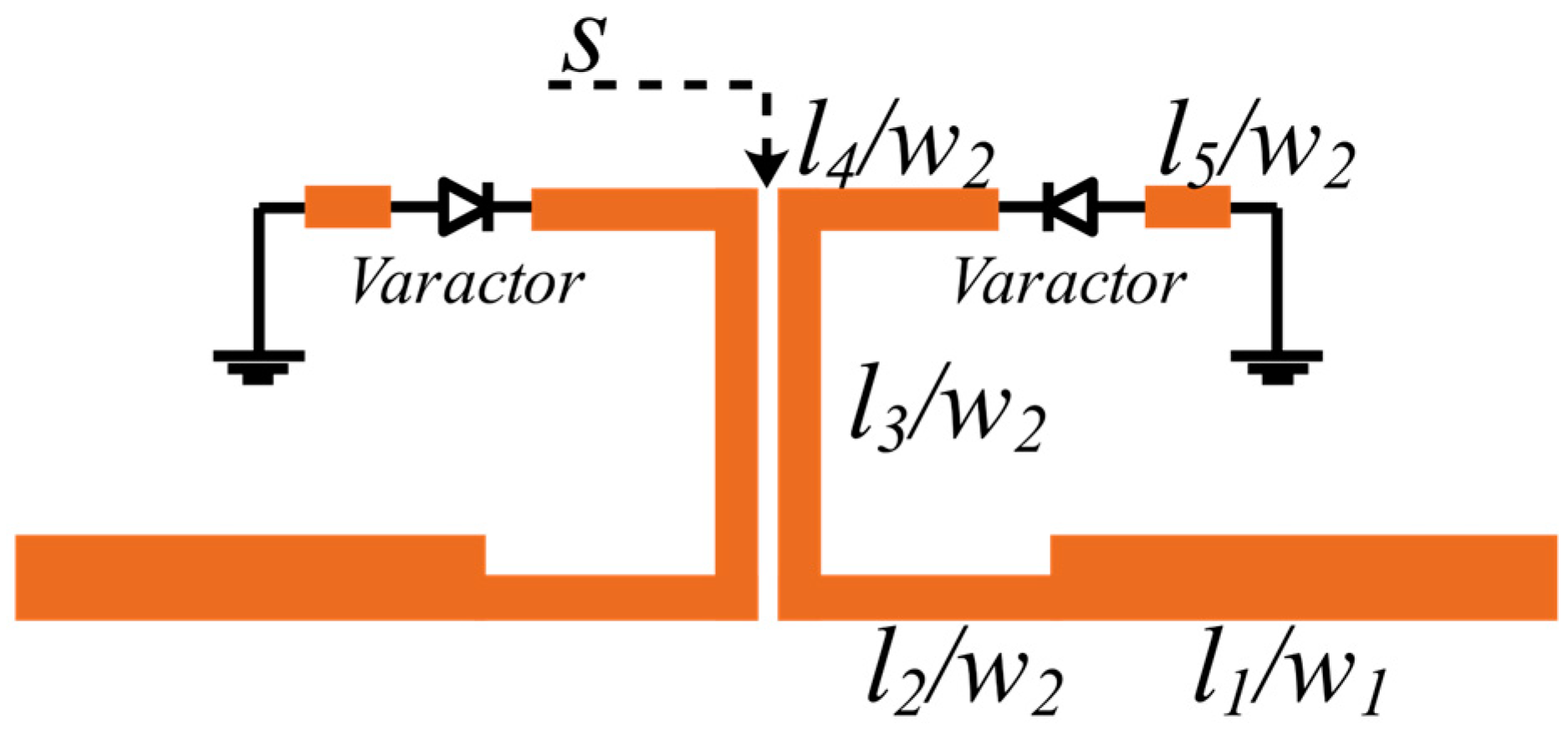
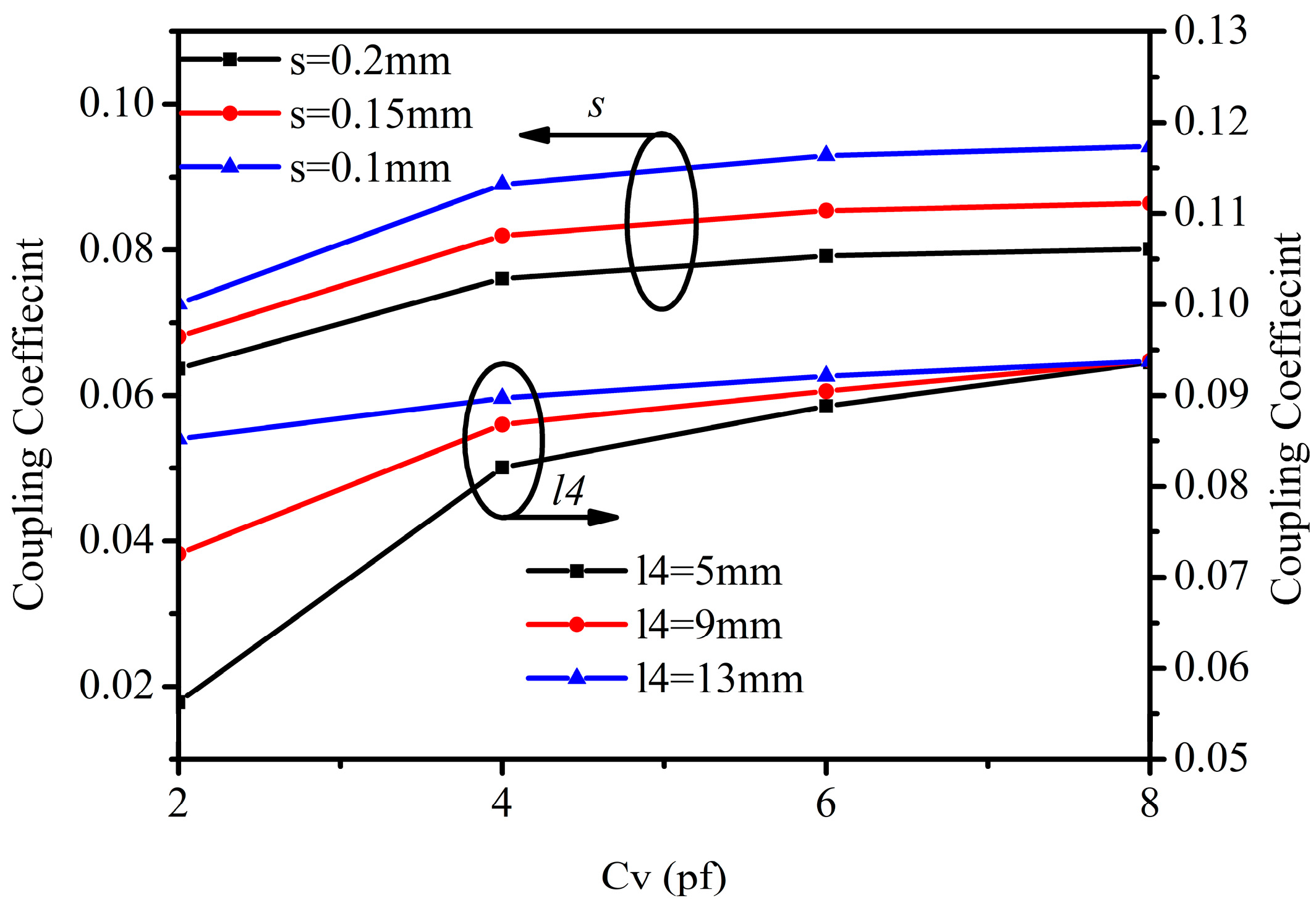


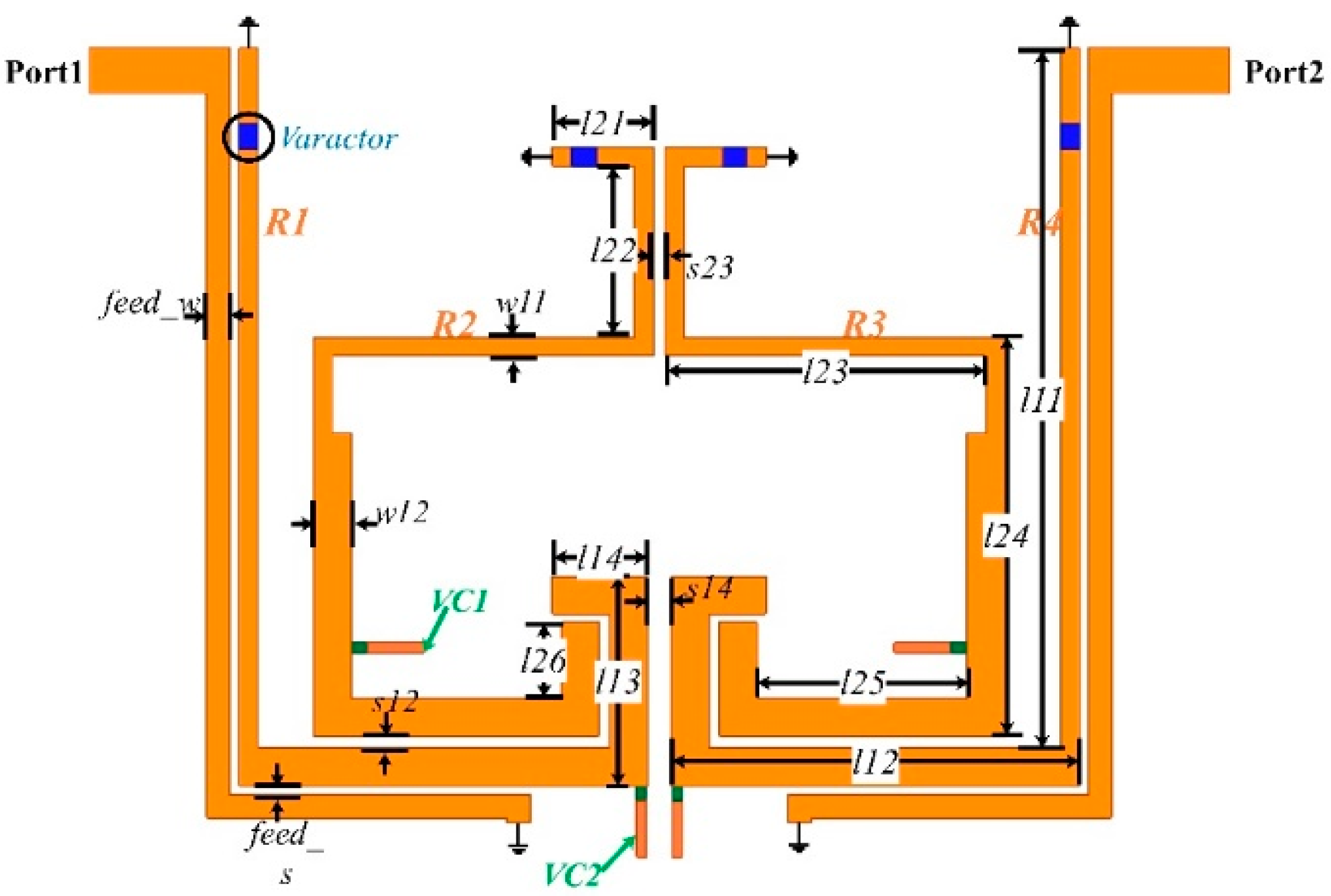
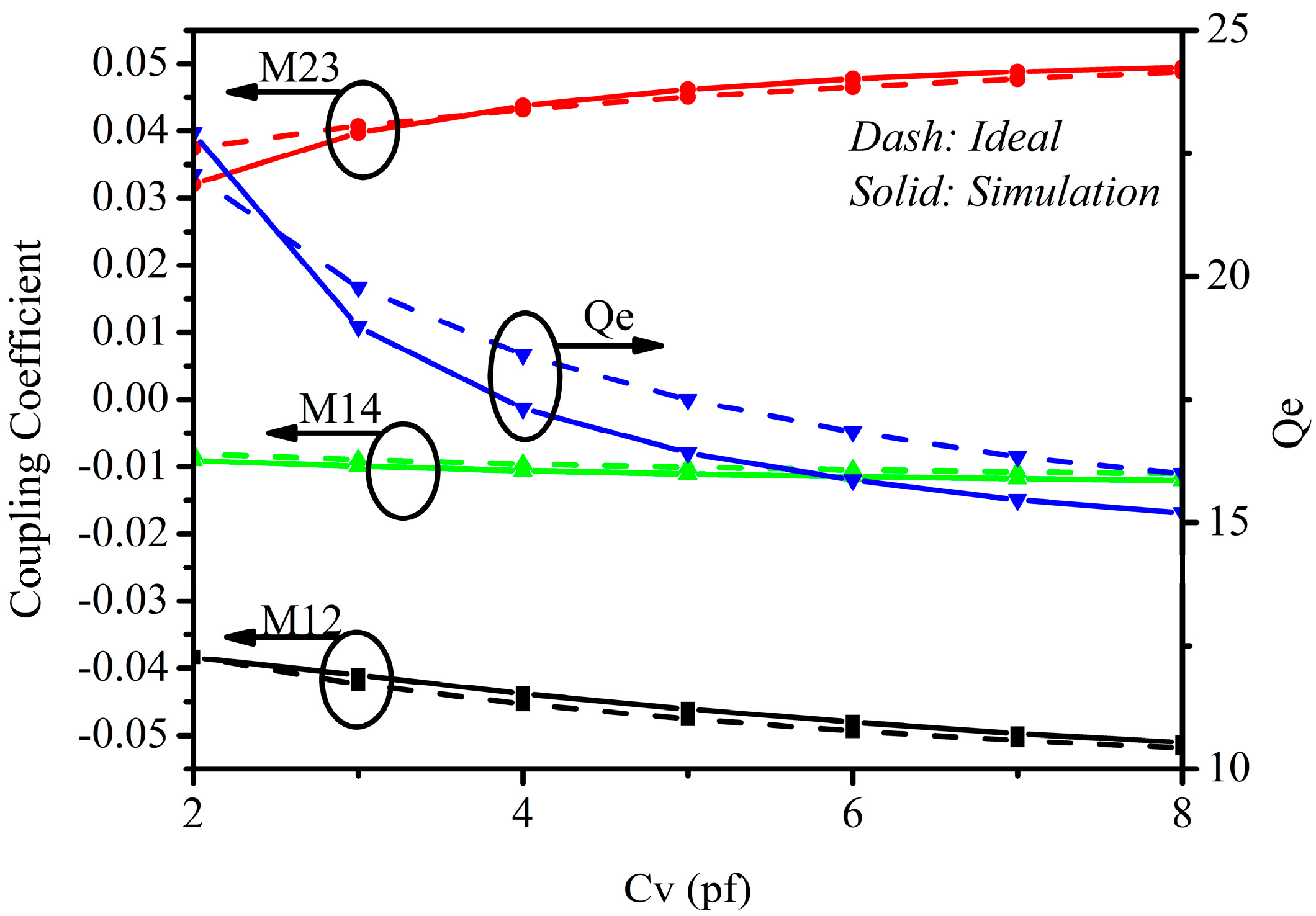
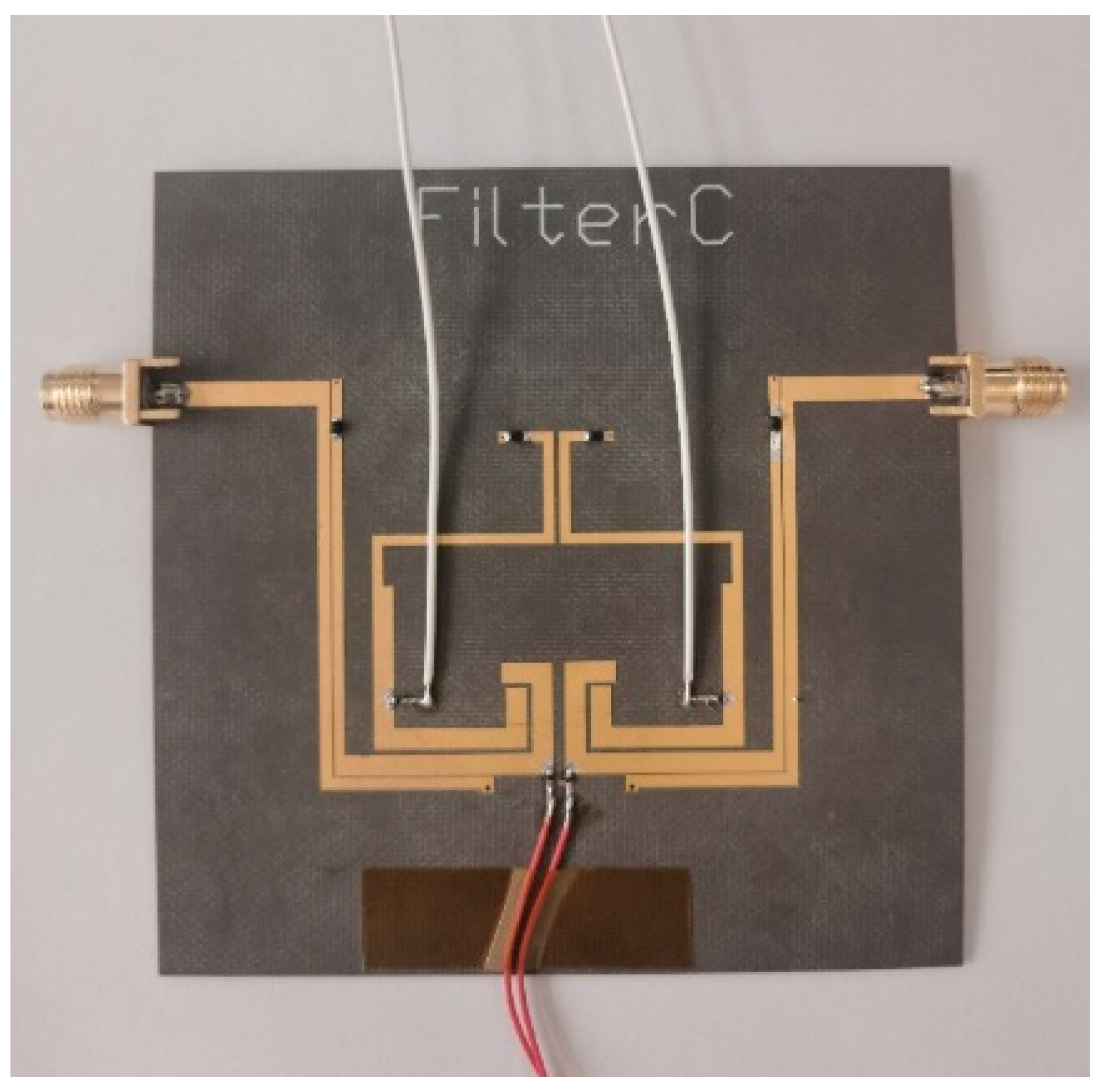
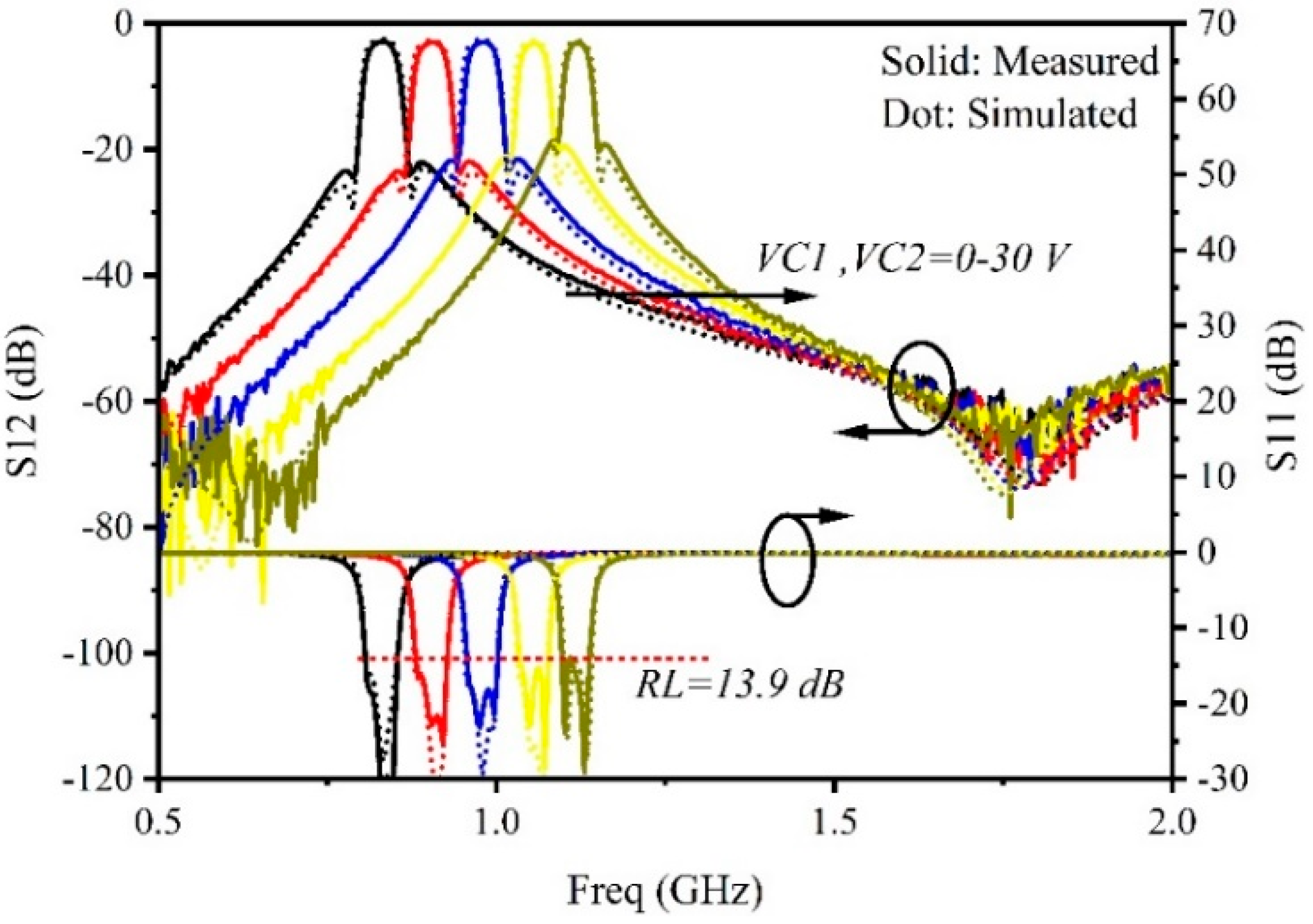
| REF. | Freq (GHz) | TR (%) | BW (MHz) | IL (dB) | Order | NTZ 3 | Resonator | CABW 2 | Size (λg × λg) |
|---|---|---|---|---|---|---|---|---|---|
| [4] | 1.5–1.8 | 18.1 | 119 | 2.5 | 2 | 0 | UIR | YES | 0.18 × 0.13 |
| [7] | 0.6–1 | 50 | 93–155 | 2.8 | 2 | 0 | SIR | NO | 0.19 × 0.19 |
| [13] | 1.48–1.88 | 23 | 92 | 5.6 | 5 | 2 | UIR | YES | NG |
| [15] | 0.89–1.13 | 23.8 | 46.8 | 4.3 | 4 | 2 | UIR | YES | 0.23 × 0.19 |
| [17] | 1.26–1.61 | 24.4 | 176–225 | 2.3 | 4 | 2 | UIR | NO | 0.09 × 0.08 |
| [18] | 2.86–3.2 | 13 | 170–320 | 6.85 | 4 | 3 | NG1 | NO | 0.3 × 0.17 |
| [19] | 2–2.45 | 20.2 | 104–135 | 6.85 | 4 | 2 | LC | NO | NG 1 |
| [20] | 1.36–1.78 | 26.6 | 93 | 5 | 4 | 2 | UIR | YES | NG 1 |
| [22] | 1.21–1.58 | 26.8 | 133 | 3 | 4 | 4 | UIR | YES | 0.73 × 0.11 |
| [24] | 2.24–2.64 | 16.3 | 240 | 3.9 | 4 | 1 | SIW 4 | YES | NG 1 |
| Proposed | 0.8–1.14 | 35.1 | 47 | 3.1 | 4 | 4 | SIR | YES | 0.14 × 0.17 |
Disclaimer/Publisher’s Note: The statements, opinions and data contained in all publications are solely those of the individual author(s) and contributor(s) and not of MDPI and/or the editor(s). MDPI and/or the editor(s) disclaim responsibility for any injury to people or property resulting from any ideas, methods, instructions or products referred to in the content. |
© 2023 by the authors. Licensee MDPI, Basel, Switzerland. This article is an open access article distributed under the terms and conditions of the Creative Commons Attribution (CC BY) license (https://creativecommons.org/licenses/by/4.0/).
Share and Cite
Li, S.; Li, S.; Yuan, J. A Compact Fourth-Order Tunable Bandpass Filter Based on Varactor-Loaded Step-Impedance Resonators. Electronics 2023, 12, 2539. https://doi.org/10.3390/electronics12112539
Li S, Li S, Yuan J. A Compact Fourth-Order Tunable Bandpass Filter Based on Varactor-Loaded Step-Impedance Resonators. Electronics. 2023; 12(11):2539. https://doi.org/10.3390/electronics12112539
Chicago/Turabian StyleLi, Shuang, Shengxian Li, and Jianrong Yuan. 2023. "A Compact Fourth-Order Tunable Bandpass Filter Based on Varactor-Loaded Step-Impedance Resonators" Electronics 12, no. 11: 2539. https://doi.org/10.3390/electronics12112539




